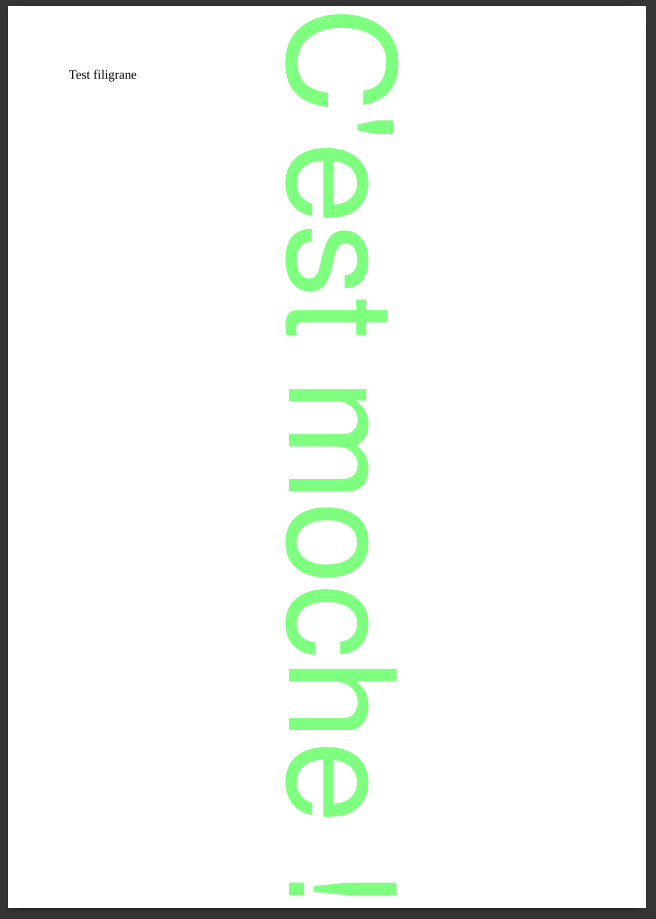Vue lecture
Final Benchmarks Of AMDVLK vs. RADV AMD Radeon Vulkan Drivers
Fix On The Way For One Of The Linux 6.19 Regressions: 52.4% Scheduler Regression
Phoenix: A New X Server Written From Scratch With Zig
ALT 11.2 "Workstation K"
The Death Of Clear Linux, Other Intel Linux Engineering Setbacks In 2025
Google Looks To Upstream Its Propeller Tool To LLVM For More Performance
Mobileye Eyeq6Lplus SoC Support Being Worked On For Mainline Linux Kernel
Ruby 4.0 Released With Ruby Box Experimental Feature, ZJIT Compiler
GuideOS 1.0
Logiciels libres en bibliothèque - « Libre à vous ! » du 16 décembre 2025 - Podcasts et références
264ème émission Libre à vous ! de l’April. Podcast et programme :
- sujet principal : l’utilisation des logiciels libres en bibliothèque, avec Rosario Etcheverry, responsable du pôle informatique, numérique et évaluation de la médiathèque de Villeneuve d’Ascq, membre de la commission numérique de l’ABF, Anouck Eychenne, médiatrice numérique pour la médiathèque du Rize à Villeurbanne et Arnaud Vayssade, responsable de la médiation numérique pour le réseau des bibliothèques de Toulouse
- la chronique Pépite libres de Jean-Christophe Becquet sur « BAM : Biodiversité Autour de Moi »
- la chronique Les humeurs de Gee sur « Plagiat involontaire et copies ratées »
Rendez‑vous en direct chaque mardi de 15 h 30 à 17 h sur 93,1 FM en Île‑de‑France. L’émission est diffusée simultanément sur le site Web de la radio Cause Commune.
Vous pouvez laisser un message sur le répondeur de la radio, pour réagir à l’un des sujets de l’émission ou poser une question. Le numéro du répondeur : +33 9 72 51 55 46.
- lien nᵒ 1 : Podcast de l’émission
- lien nᵒ 2 : Les références pour l’émission et les podcasts par sujet
- lien nᵒ 3 : La transcription de l’émission
- lien nᵒ 4 : S’abonner au podcast
- lien nᵒ 5 : S’abonner à la lettre d’actus
- lien nᵒ 6 : Libre à vous !
- lien nᵒ 7 : Radio Cause Commune
Commentaires : voir le flux Atom ouvrir dans le navigateur
Dernier numéro de la gazette de l'April, le Lama déchaîné
Voilà c'est fini… Aujourd'hui est paru le dernier numéro du Lama déchainé, la gazette hebdomadaire de l'April. Comme promis, vous y trouverez plusieurs cadeaux, le chiffre 42, un secret de polichinelle, et, comme d'habitude, un super dessin de Gee et des mots croisés.
Ce numéro bonus est centré sur l'April, car il reste moins d'une semaine pour (enfin) adhérer ou faire un don pour soutenir cette association indispensable à l'écosystème du Libre.

Comme annoncé, notre Lama déchaîné risque gros si les 30 000€ ne sont pas atteints, vous retrouverez dans ce numéro les pires "sévices" qui lui sont réservés. Nous vous laissons découvrir la liste fournie. Et si vous avez des idées…
Notre édito est consacré à ce que nous avons l'intention de faire en 2026, et y a du boulot!
Parlez-en autour de vous, relayez la campagne, faites adhérer ou donner vos proches.
Plus que sept jours pour passer à l'action. Tic tac tic tac.
- lien nᵒ 1 : numéro 10
- lien nᵒ 2 : numéro 9
- lien nᵒ 3 : numéro 8
- lien nᵒ 4 : adhérer à l'April
- lien nᵒ 5 : faire un don sur En Vente Libre
- lien nᵒ 6 : site de la campagne avec le mur de la joie
Commentaires : voir le flux Atom ouvrir dans le navigateur
Libreboot 26.01-rc1 Released To Support A Few More Systems
OmegaLinux 3.3
AUSTRUMI 5.1.3
QEMU 10.2 Released With IO_uring Support For Helping Allow For Greater Performance
DragonOS Noble_R8
Proton Experimental brings improvements for Farlight 84, CHRONO TRIGGER and more
 .
.
Read the full article on GamingOnLinux.
Snapdragon X Elite Laptop Performance On Linux Ends 2025 Disappointing
extrox 2.1
LOTemplate nouvelle version 2.2
LOTemplate est un générateur de documents sous licence AGPL v3 qui permet de générer des documents (ODT, DOCX, ODS, XLSX, PDF, …) à partir d'un document modèle avec des variables et d'un fichier json pour les données.

Comment faire faire à LibreOffice (headless, sans interface graphique) ce que l’on ne peut pas faire avec LibreOffice (GUI, avec interface graphique) ?
Et comme c’est Noël nous avons ajouté un meilleur système de log en cadeau.
Dans la version 2.2 de LOTemplate, nous avons ajouté la possibilité d’exporter des PDF en y ajoutant un filigrane de son choix avec comme paramètres :
- Texte de filigrane
- Couleur de filigrane
- Police
- Taille de police
- Le nombre de répétition sur la page
- lien nᵒ 1 : Lien Github
- lien nᵒ 2 : Changelog
Pour cela, nous utilisons l’API uno de LibreOffice, qui expose plus de paramètres que l’interface graphique de LibreOffice. En effet, si l’on cherche a faire cela dans l’interface graphique de LibreOffice, on ne peut choisir que le texte. Le filigrane apparaît ensuite en vert et à la verticale.


Mais en cherchant dans l’aide de LibreOffice, on trouve sur la page d’aide de l’outil d’export PDF en ligne de commande qu’il existe les options suivantes :
- Watermark
- WatermarkColor
- WatermarkFontHeight
- WatermarkRotateAngle
- WatermarkFontName
- TiledWatermark
C’est donc possible, LibreOffice peut le faire mais uniquement avec l’API uno. Pour faire court, rien ne l’indique dans la doc de l’API uno. Toutefois on retrouve cette page (EN) en date de décembre 2022 qui explique l’amélioration qui permet cela.
En suivant un des liens de la page on arrive à cette page (EN).
Et là on peut lire : Fix the problem by only adding the option at an UNO API level for now, this relaxes the hardcoded color without cluttering the UI.
Super, c’est possible !
Ce ne sont que des propriétés de l’export PDF. La solution a donc été simple à implémenter, avec un peu de recherche.
En résumé, savoir chercher sur internet et lire la doc reste encore utile !
Commentaires : voir le flux Atom ouvrir dans le navigateur
Proton Experimental brings improvements for CoD: Black Ops Cold War, Farlight 84, CHRONO TRIGGER and more
 .
.
Read the full article on GamingOnLinux.